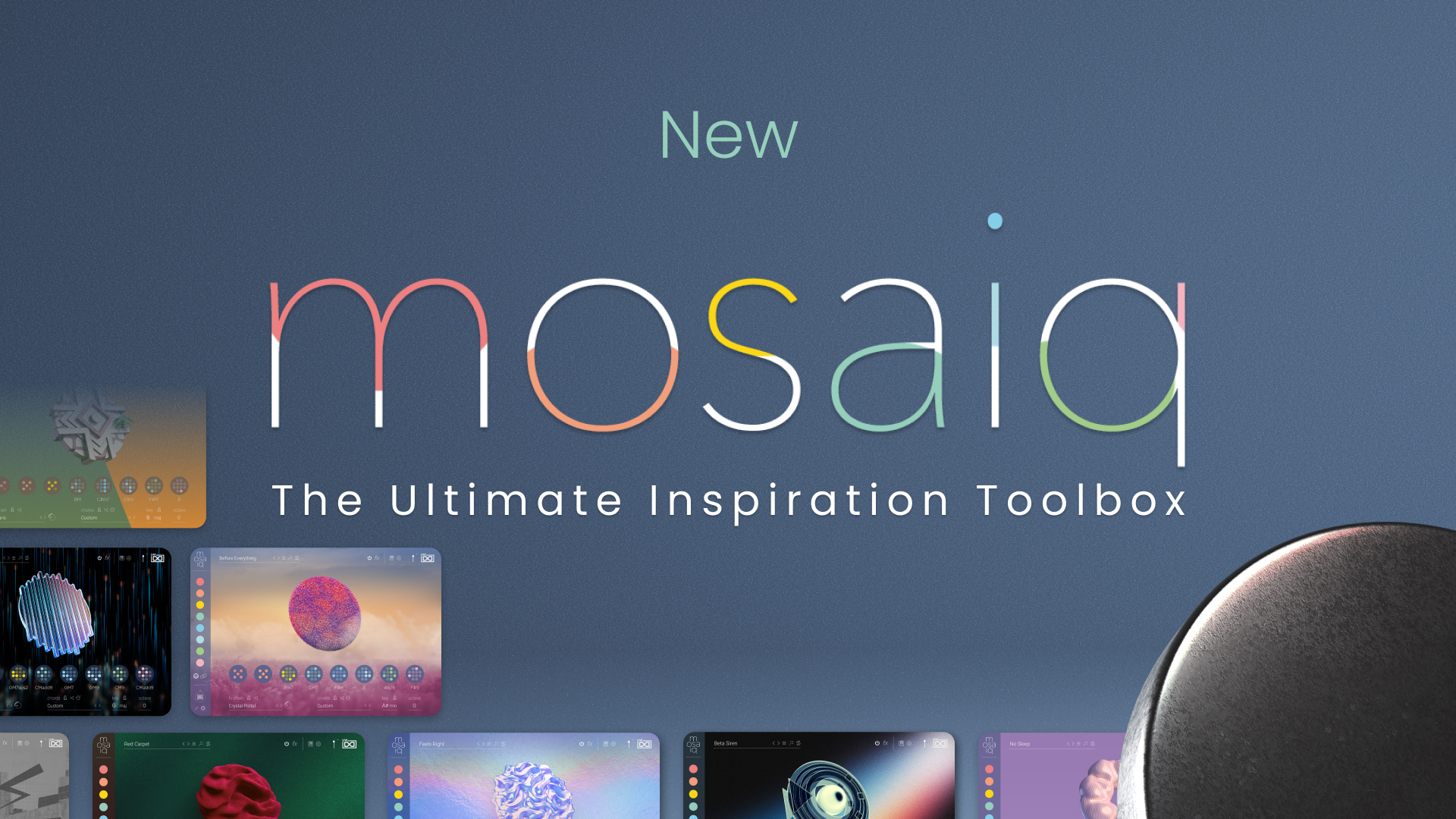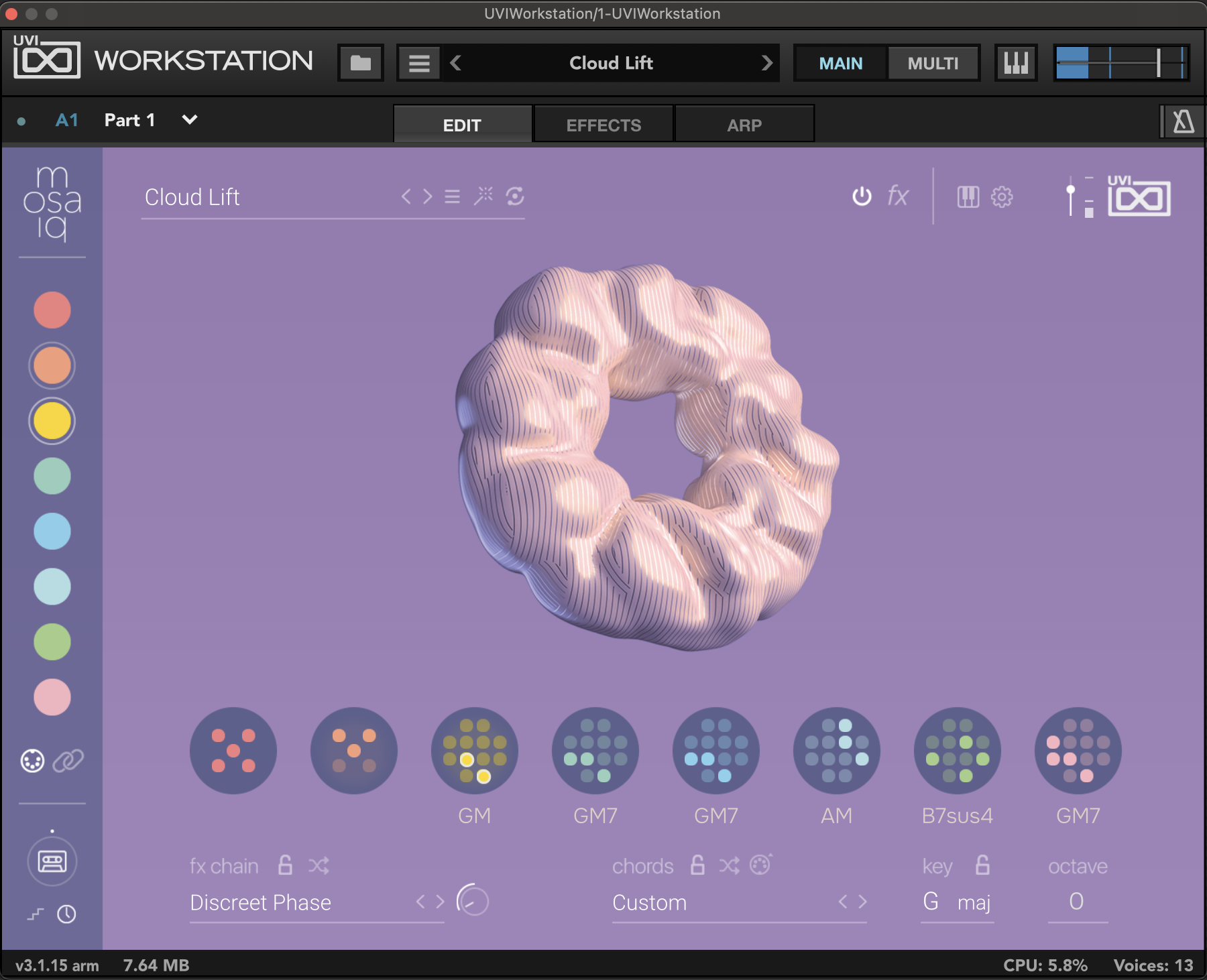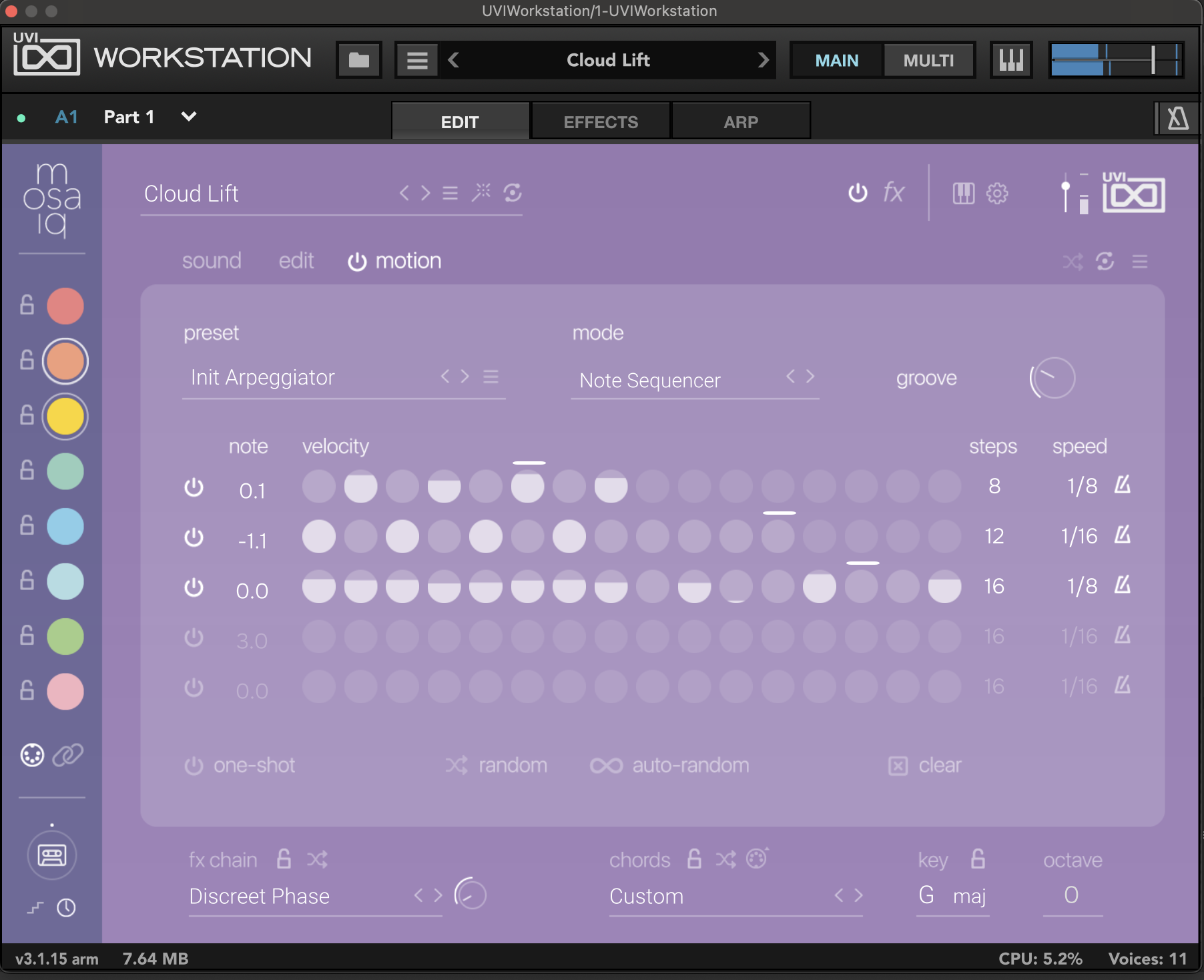Discover new rhythms, patterns and sound palettes with UVI’s multi-faceted Mosaiq
The latest instrument from the sample specialists is a sonic soundbox with a surprising amount of depth behind its easy-to-use UI

When it comes to music making software, there are two types of tools. On the one hand, there are those that we turn to for a specific task or specialised function, such as mixing and mastering effects, vintage synth emulations or specialised MIDI sequencers. Then there are plugins designed for broader creativity – versatile instruments that act like a musical sandbox designed to unleash your creativity.
Mosaiq, the latest release from soundware specialists UVI fits squarely into that latter category. Broadly-speaking, Mosaiq is a sample based instrument that puts a variety of instrument and drum sounds at your fingertips. Running within UVI’s Workstation or Falcon hosts, Mosaiq is designed to quickly and easily inspire ideas, but it also packs plenty of creative depth for producers looking to explore advanced sound shaping and pattern generation. Let’s dig into what the instrument has to offer…
Sounds
The sample-based sound engine behind Mosaiq is based around a library of 1,200 presets. These are divided into eight carefully-curated genre categories designed to span a broad range of musical needs.
These genres skew heavily towards contemporary sounds, themed around sounds such as hyperpop, contemporary R&B and high-gloss drum & bass. However, diving into the presets themselves and the source samples used to construct them, it quickly becomes apparent that there’s a real breadth to the sounds on offer. By applying a mix and match approach to the sample library, it’s easy to shape the sound set to your own personal taste, or inspire some new sonic combinations.
While the top level presets are themed around genres, within each of the instrument’s sample slots individual sound can be accessed through a tag-based browser that makes it easy to quickly find sounds by instrument type or character. Each sample can also be quickly previewed from the browser view, allowing users to easily audition potential sounds.

Workflow
Mosaiq’s sounds are divided into Instruments, Drums and Kits. Instruments focus on melodic sounds, and loading an instrument will also load a selection of chord presets that can be instantly triggered to create quick progressions. Similarly, the percussion-focused Drum presets load with a variety of rhythmic sequences ready for playback.
Kits, on the other hand, are complex presets that contain both melodic and percussive sounds, and mix both chord progressions and drum patterns.
The top level UI for each of Mosaiq’s presets makes interacting with sounds incredibly intuitive. With a MIDI controller hooked up to Mosaiq we can trigger the preset patterns or chords using the eight white keys of our keyboard. At the same time, the black keys – sharp/flat notes – can be used to punch-in interactive effects such as filters and delays that can quickly bring patterns to life.
From this top level UI, we can also make other broad changes such as altering the key or selecting different chord patterns, which are organised by mood and tone. Here, we can also select from different preset effect chains, which can radically alter the character of an instrument.

Editing
Beyond these instant playback tools, Mosaiq’s approachable interface hides a wealth of depth for shaping both the sounds themselves and the patterns being triggered. Each drum or instrument track is actually made up of five available sample slots that can be used to stack sounds to create chords or complex tonalities, or sequenced to create one-note patterns or arpeggios.
Each of these five sounds has its own level, tone and pan position controls. In the Edit tab, meanwhile, we can alter parameters for the track as a whole. Here we can apply a multimode filter, adjust the global amp envelope, apply modulation via an LFO, and finish the whole sound off using the three-band EQ.
Crucially, the sequences and patterns in Mosaiq are MIDI-generated, rather than drawing on audio loops. Because of this we have the option to open up any pattern or progression in order to edit the finer details. This can be done in the Motion tab, where we can apply a variety of sequencing tools, including a step sequencer, a fully editable arpeggiator and the multi-track note sequencer – each with a broad selection of presets on offer.
Entering Mosaiq’s FX tabs allows us to also edit the five-slot effect chain. Each of these slots can be filled with one of eight creative effects, which cover distortion, modulation effects and convolution, with a selection of adjustable parameters available to tweak each effect type. These effect slots are joined by an additional three-band output EQ, along with a further pair of LFOs to modulate the effect parameters.

Advanced tips and tricks
Despite its ease of use and clean UI, there’s a lot of depth to Mosaiq once you start digging in, and plenty of creative hacks and tricks to discover. A personal favourite technique is to apply a mix of percussive and tonal samples to a single track, and use the arpeggiator or note sequencer to create patterns that mix rhythm and melody, which can be triggered by a single key press.
Even better, the note sequencer allows for different step lengths to be applied for each of its lanes – up to a maximum of 16 steps for each lane. By selecting a different step length for each of the five sampled sounds, we can create complex polymetric and polyrhthmic patterns that evolve with each loop.
On a similar note, Mosaiq features some fantastic randomisation tools that can be great for overcoming creative blockages. The note sequencer features a Random button that can automatically generate a new pattern or, with Auto-Random selected, completely remix the pattern with each new loop.
Sounds can be randomised at the top level too. Hit the magic wand icon next to the preset browser and Mosaiq will randomly source a whole new patch, which has the potential to inspire completely new ideas. If full randomisation is a little too extreme, the next-door Mutate tool can be used to mix up the samples without completely altering the pattern and overall settings.
What’s more, the plugin’s Vari-Speed function is a great fun tool for warping the tempo and pitch of your whole composition, which can be locked to pitch and scale.
UVI Mosaiq is available now, with a launch discount available until 24 February. Visit UVI for more.
Get the MusicRadar Newsletter
Want all the hottest music and gear news, reviews, deals, features and more, direct to your inbox? Sign up here.

